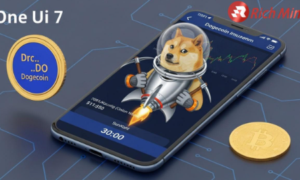Few topics are simultaneously celebrated and misunderstood as Bitcoin. On one end of the spectrum, you’ve got a fervent community of Bitcoin advocates, while much of the population remains confused and skeptical about the topic.
But even the biggest Bitcoiners find themselves at a loss when it comes to Bitcoin mining, the process by which the cryptocurrency is created and rewarded to blockchain contributors.
Let’s clear up some of the myths and mysteries around Bitcoin mining and give you everything you need to know in one place.
Bitcoin Mining Basics
Unlike traditional currencies printed and regulated by central banks and treasuries, Bitcoin must be created through a computing-intensive process called mining.
Here are the fundamentals of Bitcoin mining that you need to know.
Building the Blockchain
Think of Bitcoin as the tip of the iceberg floating above the surface of a deep, complex technology known as the blockchain. Every Bitcoin in circulation results from the blockchain’s development over time and these coins are rewarded to miners who crack complex codes.
In short: no mining, no Bitcoin! This is the essence of Bitcoin and why mining is so important.
Without mining to validate and secure the underlying technology of the blockchain, the asset would be prone to corruption or fraud, then quickly become worthless.
Therefore, miners dedicate huge amounts of computing resources to the blockchain to solve cryptographic equations and earn rewards for their efforts. As a result, we have a strong, secure technology that can’t be manipulated or inflated like fiat currency.
Mining vs. Buying Bitcoin
Why would someone choose to mine Bitcoin instead of simply buying it on platforms and exchanges? There are a few key advantages to consider.
Firstly, buying Bitcoin at market price is unpredictable, even if you play it safe and dollar-cost-average your purchases over time. Even if you time the market properly, you’re paying top dollar for Bitcoin at that given time, and a price downturn is always possible.
This isn’t to discourage you from adding Bitcoin to your portfolio by buying direct or exchanging goods and services for BTC. However, mining is still the most proven and effective route to go directly to the source and maximize your accumulation of satoshis (portions of Bitcoin).
Key Terms and Metrics
There’s an unlimited amount of information to absorb surrounding Bitcoin mining, and it’s easy to get overwhelmed. To simplify things, we’ve picked some commonly confusing terms to clarify with quick definitions, offering further perspective on the mining process.
Hashrate
In general computing terms, hashrate refers to the computational power of a certain set of resources, typically measured in calculations per second.
In Bitcoin mining, hashrate is a key metric used to determine the health and efficiency of the network, and whether a mining operation is profitable in the current landscape. Bitcoin’s total hashrate has dropped precipitously since November 2021, correlating closely with the market price.
SHA-256
Speaking of hashes, what exactly is the Bitcoin network doing with all that computing power? SHA-256 offers a tangible explanation for the types of computations required by the blockchain, and how blocks are constructed to dish out rewards.
SHA-256 refers to the hash function used within the Bitcoin network, taking a random input and producing a specific output in a “one-way” computation. At scale, this creates a hyper-secure environment for each block and the ledger at large.
Bitcoin Halving
Every few years, the Bitcoin block reward is cut in half, meaning that miners receive less payout for the same level of effort. This is by design, drawing out the inevitable event that at some point, the final Bitcoin will be mined.
The next halving is scheduled to take place sometime in March 2024. Events like these can result in price fluctuations and change the mining landscape in significant ways.
Popular Mining Methods
A lot has changed since Bitcoin miners assembled wonky gaming computer rigs back in the day, earning coins that were then considered worthless. Those who saw the writing on the wall came out rich, but most of us missed the boat.
Nowadays, volume and efficiency are the keys to mining Bitcoin at a profit, even in a crypto bear market. Team up with enterprise mining operations that focus on green energy and enjoy high hashrates without exorbitant energy costs.
The good news is that Bitcoin’s quest for cheap energy is driving renewable trends at large, leading to a more sustainable future for us all.
Start Mining Bitcoin the Right Way
The golden age of Bitcoin mining may be in the rearview, but this doesn’t mean you should ignore this venture entirely.
Given the rollercoaster price history of crypto assets, mining could once again become hugely profitable, especially in conjunction with green energy and other efficiency boosters. The future of Bitcoin and crypto at large is bright, so don’t miss out.



































